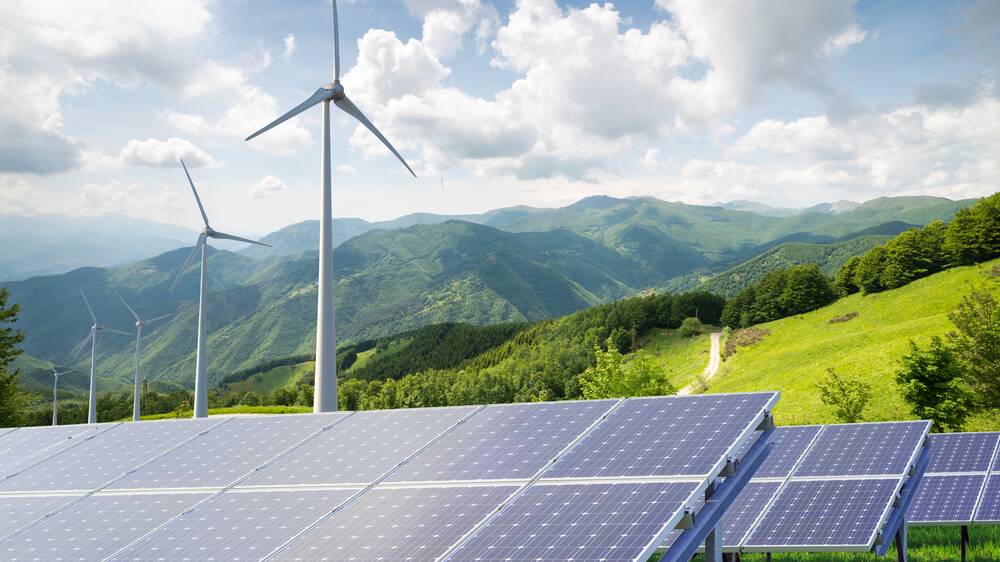
Australia and many other countries are transitioning from polluting fossil fuels to clean renewable energy.
Subscribe now for unlimited access.
$0/
(min cost $0)
or signup to continue reading
The strategy recommended by most energy experts is renewable electrification: converting fossil-fuelled transportation and heating to electricity while replacing coal - and gas-fired power stations with renewable electricity, mostly wind and solar power.
Additional storage, such as batteries and pumped hydro, is required to maintain reliability of supply.
Is there enough land available, in Australia and the whole world, for 100 per cent renewable electricity to supply all energy demand? Some people claim that wind and solar farms will compete for land with food production and will threaten biodiversity. This claim is sometimes expressed as renewable energy having "low energy density or low power density".
For wind farms, the fact is that, although they span large areas, the turbines and access roads occupy a tiny fraction of the land spanned, typically 1-2 per cent according to a study by the US National Renewable Energy Laboratory.
Wind farms are compatible with essentially all forms of agriculture, giving farmers an additional source of income as rent. Some wind farms occupy less land than an equivalent coal-fired power station with open-cut coalmine. Off-shore wind farms occupy no land.
Solar farms are compatible with some types of farming. If built sufficiently high above the ground, they provide shelter for sheep; their spacing can be increased a little to reduce shading, allowing wheat and other crops to be grown.
Some solar farms are built on marginal land, while rooftop solar requires no additional land.
If all Australia's final energy consumption from fossil fuels in 2018-19 - comprising coal, refined petroleum products, gas and 80 per cent of electricity - were supplied instead with renewable electricity, annual electricity generation would have to be increased by 1124 TWh or 4.8 times total electricity generation in 2018-19.
If half this electricity were supplied by solar farms and half from wind farms, the solar part would require 7505 square kilometres, the equivalent of a square of side 86.6km.
However, in practice a large fraction of solar would be on rooftops, more than offsetting the modest area of land used by wind farms.
This back-of-envelope calculation assumes no growth in total final energy consumption. This is possible even when primary energy increases, because of the greatly increased energy conversion efficiency from primary to final energy resulting from the transition to 100 per cent renewable electricity.
Peer-reviewed studies have shown that there is ample land for 100 per cent renewable electricity globally, without competing with food production or desecrating national parks.
Regions deficient in renewable energy resources, within and between countries, can import renewable electricity by transmission line from regions with excess.
An exciting future example is the giant Sun Cable project by Mike Cannon-Brookes and others to export solar electricity to south-east Asia.
Listen to the Fuzzy Logic Science Show at 11am Sundays on 2XX 98.3FM.
Send your questions to AskFuzzy@Zoho.com Twitter@FuzzyLogicSci

